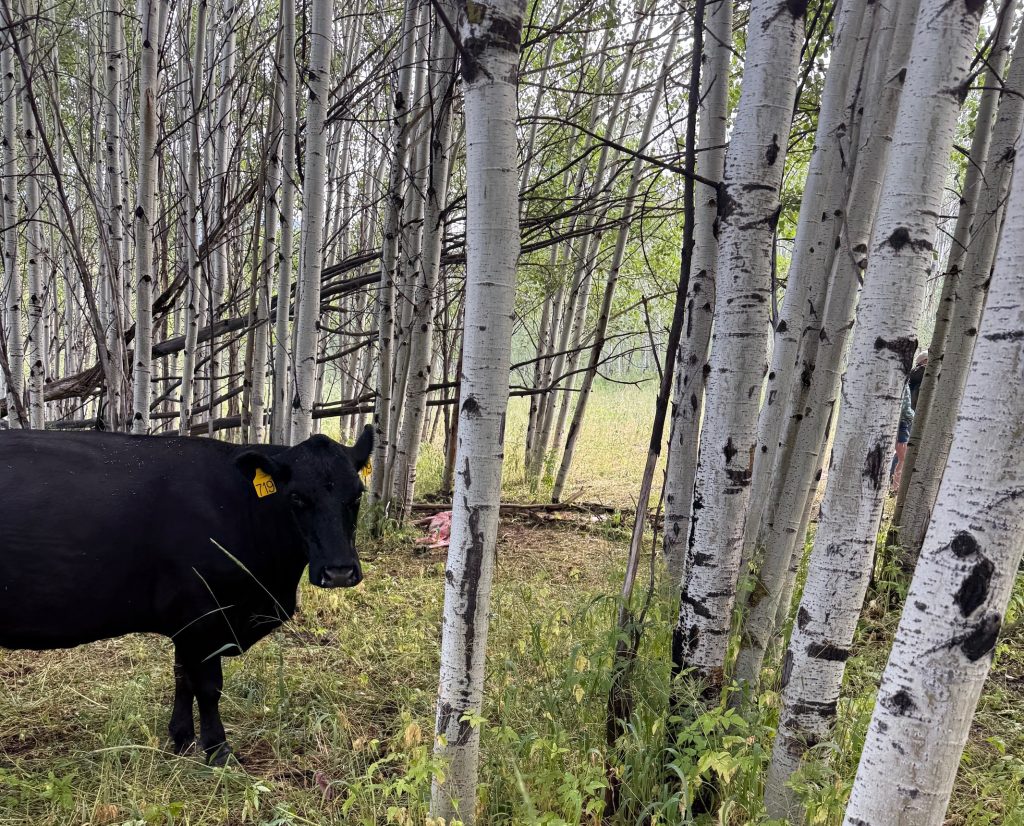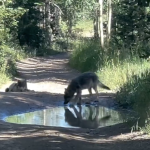What went wrong with the Copper Creek wolf pack? Colorado’s top wildlife official addresses current challenges
Colorado Parks and Wildlife Director Jeff Davis talks about the pack’s history and ongoing controversy

Mike Usalavage/Courtesy video
While Colorado’s wolf restoration has now seen 25 wolves released and four packs formed, one group in particular has dominated the discourse: the Copper Creek pack.
The Summit Daily recently sat down with Jeff Davis, the director of Colorado Parks and Wildlife, to discuss all things wolves, including what’s been going on with the Copper Creek wolf pack.
The pack’s founding wolves carried some controversy from the moment they were brought from Oregon to Colorado. While the female, 2312, did not have a known pack in Oregon and no suspected history of depredation, the male, 2309, came from Oregon’s Wenaha Pack, which had been involved in a confirmed depredation two months before his relocation to Colorado.
Despite the agency’s insistence that wolves with recent histories of depredation wouldn’t be considered for relocation, the male was relocated to Colorado. In a 2024 document released by the agency about the pack, Parks and Wildlife indicated that the pack was not chronically depredating, and the technical working group’s recommendations within the wolf plan said packs with “infrequent depredation events” should not be excluded for relocation.
Around the time the pair had pups in 2024, the wolves were connected to repeated livestock attacks in Grand County, prompting Parks and Wildlife to capture and relocate the animals to a sanctuary.
The pack’s original patriarch — which Davis said in the recent interview was “no doubt involved in the majority of those depredations” — died in the sanctuary from injuries relating to a gunshot wound obtained before capture. This poaching incident is still being investigated by the U.S. Fish and Wildlife Service.
During these 2024 depredations, Davis said that the “female was in the den or couldn’t travel far from the den” due to the pups’ age at the time.
“Was she likely involved in some depredations? Sure,” Davis said. “Did we have a chronic depredation definition? No. Looking back at the incidents there, she would not have triggered the chronic depredation definition (three depredations in 30 days) in that space.”
The Copper Creek Pack was Colorado’s first pack established by reintroduced wolves. It formed in the spring of 2024 after two Oregon wolves mated and had five pups.
June 18, 2024: First pup born to reintroduced wolves confirmed. Family named Copper Creek Pack.
April to July 2024: Pack involved in repeated livestock depredations in Grand County.
Aug. 19: Video confirmed more pups in the pack.
Aug. 30 to Sept. 25, 2024: 6 members of the pack (2 adults and 4 pups) are captured and relocated to a wildlife sanctuary due to depredation activity.
Sept. 3, 2024: Pack’s adult male died due to a gunshot wound.
Sept. 30 to Oct. 11, 2024: 5th wolf pup from the pack identified in Grand County; remains in wild after failed capture attempts.
Jan. 2025: Adult female and four pups released back into the wild in Pitkin County.
May 17-25, 2025: Pack connected to four livestock attacks in eight days in Piktin County, meeting “chronic depredation” standard set by Parks and Wildlife.
May 29, 2025: Male yearling killed by Parks and Wildlife.
July 18, 2025: Copper Creek wolf pack responsible for seventh livestock attack in Pitkin County
July 28, 2025: CPW confirms they are seeking to kill a member of the Copper Creek pack
In the wake of the incidents in Grand County and with repeated requests from Colorado producers, the agency did convene a stakeholder group to aid in crafting a definition for chronic depredation as well as the set of circumstances that merit the agency to kill one of the pack’s members.
In January, Parks and Wildlife released the matriarch and four pups from the sanctuary in Pitkin County, against the wolf plan’s recommendation that “the translocation of depredating wolves to a different part of the state will not be considered, as this is viewed as translocating the problem.”
At a July 1 legislative hearing about the wolf program, Davis said, “That decision on Copper Creek was mine and mine alone” and admitted it was one he questions every day.
Repeatedly since it occurred, Davis has reiterated that the decision was spurred by unique circumstances — particularly with the presence of pups — often calling it a perfect storm, and would not dictate how the agency managed similar situations in the future.
The controversial decision has only been heightened by the pack’s behavior in Pitkin County since their January release. The matriarch has since bred with another male wolf. And in May, wolves in the pack were tied to four livestock attacks in eight days, meeting Parks and Wildlife’s definition of chronic depredation. As such, the agency killed one of the pack’s yearlings tied to the attacks in an attempt to change the group’s behavior.

The goal, Davis said, was to encourage the animals away from regular interactions with livestock and more toward native ungulates.
However, following the yearling’s death, producers have witnessed further harassment of livestock by the Copper Creek wolves, and in July, Parks and Wildlife confirmed a wolf in the pack was responsible for the death of a calf. This marked the pack’s seventh confirmed incident this year.
This told the agency that the pack has not been deterred from regularly pursuing livestock and required more work to do so, Davis said.
Starting July 20, the agency deployed staff in Pitkin County to try and locate and kill another member of the pack. So far, it has been unsuccessful, citing challenges getting close enough to the animals in the terrain.
When asked what he believes has led to the situation with the Copper Creek Pack, Davis mentioned several factors.
“Biologically, where wolves overlap with livestock, there will be depredations,” Davis said, adding that wolves also have different biological and social roles in a pack.
“Sometimes in certain instances, that might be true that the whole pack is involved in chronic depredations,” he said. “But oftentimes, it’s individuals that are involved in targeting livestock over deer and elk on a regular basis. I point that out because that’s very important in this particular situation.”
With the release in Pitkin County, Davis said the agency “didn’t anticipate that they would settle where they did.”
“Every wolf we released has gone a long way from the release site,” he added. “We anticipated the same to happen with Copper Creek.”

Support Local Journalism

Support Local Journalism
As a Summit Daily News reader, you make our work possible.
Summit Daily is embarking on a multiyear project to digitize its archives going back to 1989 and make them available to the public in partnership with the Colorado Historic Newspapers Collection. The full project is expected to cost about $165,000. All donations made in 2023 will go directly toward this project.
Every contribution, no matter the size, will make a difference.










